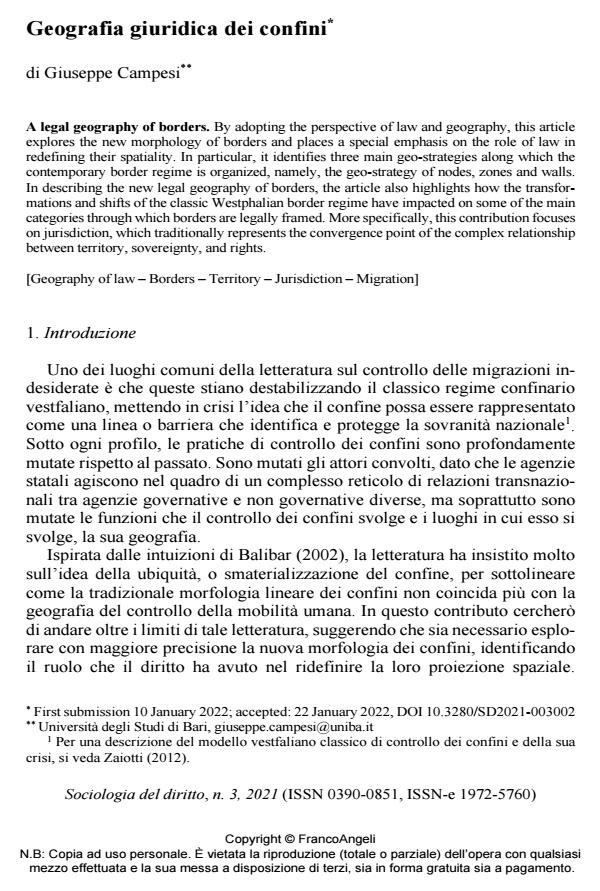A legal geography of borders
Journal title SOCIOLOGIA DEL DIRITTO
Author/s Giuseppe Campesi
Publishing Year 2021 Issue 2021/3
Language Italian Pages 28 P. 15-42 File size 251 KB
DOI 10.3280/SD2021-003002
DOI is like a bar code for intellectual property: to have more infomation
click here
Below, you can see the article first page
If you want to buy this article in PDF format, you can do it, following the instructions to buy download credits

FrancoAngeli is member of Publishers International Linking Association, Inc (PILA), a not-for-profit association which run the CrossRef service enabling links to and from online scholarly content.
By adopting the perspective of law and geography, this article explores the new morphology of borders and places a special emphasis on the role of law in redefining their spatiality. In particular, it identifies three main geostrategies along which the contemporary border regime is organized, namely, the geo-strategy of nodes, zones and walls. In describing the new legal geography of borders, the article also highlights how the transformations and shifts of the classic Westphalian border regime have impacted on some of the main categories through which borders are legally framed. More specifically, this contribution focuses on jurisdiction, which traditionally represents the convergence point of the complex relationship between territory, sovereignty, and rights.
Keywords: [Geography of law - Borders - Territory - Jurisdiction - Migration]
- Stranieri né fuori né dentro: l'immaginario geografico della entry fiction, dall'imperialismo statunitense al diritto d'asilo dell'Unione Europea Ettore Asoni, in RIVISTA GEOGRAFICA ITALIANA 2/2025 pp.5
DOI: 10.3280/rgioa2-2025oa20566 - Fare ricerca in geografia del diritto: alcune coordinate metodologiche Francesco Chiodelli, in RIVISTA GEOGRAFICA ITALIANA 1/2025 pp.5
DOI: 10.3280/rgioa1-2025oa19487 - Spazio, diritto e la loro relazione: percorso e confini della legal geography Ettore Asoni, in RIVISTA GEOGRAFICA ITALIANA 1/2024 pp.5
DOI: 10.3280/rgioa1-2024oa17374
Giuseppe Campesi, Geografia giuridica dei confini in "SOCIOLOGIA DEL DIRITTO " 3/2021, pp 15-42, DOI: 10.3280/SD2021-003002